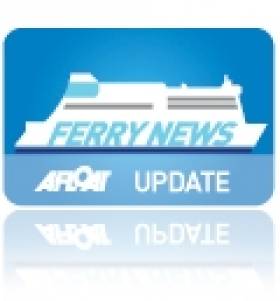Displaying items by tag: TT2015 Races
Isle of Man Steam Packet Charter P&O Fast-Ferry As Demand Increases for TT2015 Races
#TT2015sailings – A boost to sailing capacity driven by demand for TT2015 will see Isle of Man Steam Packet Company charter P&O Ferries fast-ferry Express to assist in the annual splurge of traffic heading to the prestigious annual motorcycle races.
The charter will allow the Steam Packet Company to revise its schedule and increase the number of sailings. An extra four return sailings have been added to the schedule from Larne while their Manannan, also a fast-ferry will operate an additional five Liverpool returns during the TT.
Bookings for the additional sailings open at 8.30am on Monday, November 3rd, and demand is expected to be high.
The Steam Packet Company had already increased capacity for motorcycles to travel to the Island for the annual road racing festival with the announcement earlier this year that a specially-built mezzanine deck will be in place on the Manannan during the TT.
Chartered freight ro-ro vessel MV Arrow as previously reported, will also once again be in service during the TT, freeing up the ro-pax ferry Ben-my-Chree to accommodate additional vehicles.
Steam Packet Company CEO Mark Woodward said: 'We are constantly looking at ways we can help the TT grow as an event by working. Around the clock during the event and ensuring we do everything possible to meet as much demand as we can.
'There was a marked increase in demand when bookings for the 2015 TT opened in May, with first day bookings up 41% on the previous year and many sailings for the period virtually sold out within just days.
He added 'One of the biggest areas of demand is from people wanting to bring their motorcycles, and we have responded to that by making a substantial investment in a mezzanine deck which will increase motorcycle capacity on Manannan by 30%.




























































